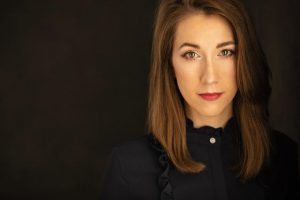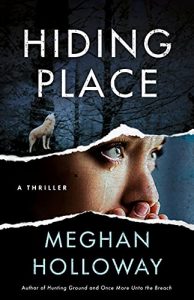The Shape of Storytelling by Meghan Holloway
 I fell in love with writing during a scriptwriting course in college.
I fell in love with writing during a scriptwriting course in college.
I had recently switched my major from math to creative writing, and the scriptwriting class taught by a theatre professor was my first workshop. Storytelling in its written form was the passion that nourished me, challenged me, and drove me. It was always something I did without thought, scribbling a line of dialogue or a turn of phrase that came to me, crafting scenes in my head as I hurried between classes on campus, voraciously devouring books and inviting someone else’s characters to take on a life inside my own imaginings.
Like calculus or linear algebra, writing made sense to me. But unlike finding the derivatives of quotients, I did not know the rules for writing.
Until the scriptwriting course. I enrolled in the class simply because it was a workshop available and I needed the credits after so many semesters of science and math courses. I begrudged the half mile walk uphill across campus through the suffocating wet wool of a southern summer day. I expected little of the course as I took my seat around a long table.
Instead, it shifted my existence and my passion on its axis.
“I want to be a playwright,” I announced to my roommate as I swept into our dorm room after the second week of the course.
“But you don’t even like the theatre,” she said.
“I haven’t tried to appreciate it,” I said.
“When I tried to convince you to go see Les Mis with me, you said it was a travesty that a brilliant piece of literature had been turned into a singalong.”
“That’s a musical,” I argued, “not a play.”
But she was not wrong on either account. My entire experience with the theatre up until that point consisted of a professional production of The Phantom of the Opera (yes, the horror, a musical) when I was ten and being cast in the role as an elf in the school play that same year. Perhaps the theatre had never spoken to me because I came down with pneumonia and did not have a chance to perform my grand debut role as an elf.
That semester, I attended every production the theatre department put on. My roommate was right, though. I was not interested in the plays themselves. Instead, I was fascinated by the structure of the script, the strong focus on dialogue, the thought behind the scene setting and every carefully articulated movement as the characters interacted with one another and the stage set.
“Every word must count,” the professor said. “Every step must count.”
Boiling a story down to its bare essentials—dialogue and physical movement of the character in her environment—changed the way I viewed writing. There were rules. There was structure. There were functions.
It was more changeful and fluid than mathematical equations, certainly. I was not always assured of finding the answer I sought as I was in neatly penciled calculations. But writing suddenly had form and meaning when before it had been sound and fury, raw emotion sprawled inelegantly upon the page instead of a scene and interaction choreographed for impact.
When I knew I was writing a trilogy, I reread my battered copy of The Playwright’s Process, one of the assigned texts from that scriptwriting course I took so many years ago. My professor’s words still resonated with me. Every word, every step must count.
The Hector Lewis trilogy is very much a play in three acts. I named those three acts Hunting Ground, Hiding Place, and Killing Field. I cast a different female lead in each act, but the emotional journey of Hector himself, tortured and damaged, struggling to come to grips with a loss he only fully appreciated once he could never recover it, is center stage.
This is my first trilogy, my first set of stories with an overarching plot interwoven across three different books. Each act can stand on its own, but to understand the full evolution of the character, each story is truly only one part of a whole.
I loved the challenge of writing a trilogy, of setting the stage for a character’s grim quest for redemption and retribution and allowing that odyssey to unfold in meticulous, deliberate scenes. Each word, each step, I reminded myself.
I do not know if I would have written a series like this if I had not once sat around a table in the theatre department and fallen in love with the shape of storytelling that looked so different from what I was familiar with. I certainly would not be the author I am today had one course not set me on my own pilgrimage to understand the meaning and the weight behind the various forms of writing.
It was the first of many workshops. Poetry, children’s literature, creative nonfiction, short story, journalism…But my grand romance with the craft of the written word began unexpectedly in a tiny room tucked away in a corner of the school’s theatre building.
—
Meghan Holloway found her first Nancy Drew mystery in a sun-dappled attic at the age of eight and subsequently fell in love with the grip and tautness of a well-told mystery. She flew an airplane before she learned how to drive a car, did her undergrad work in Creative Writing in the sweltering south, and finished a Masters of Library and Information Science in the blustery north. She spent a summer and fall in Maine picking peaches and apples, traveled the world for a few years, and did a stint fighting crime in the records section of a police department.
She now lives in the foothills of the Appalachians with her standard poodle and spends her days as a scientist with the requisite glasses but minus the lab coat.
HIDING PLACE, Meghan Holloway
 Hector Lewis is obsessed with uncovering the truth of what happened to his wife and daughter fifteen years ago. The man he believed responsible for their disappearance is dead, and the trail has once again grown cold. Until he finds a long-hidden message from the past. Unraveling the clues his wife left behind leads Hector deep into the wild borderlands of Yellowstone National Park and into the dark labyrinth of his own obsession with finding his missing girls.
Hector Lewis is obsessed with uncovering the truth of what happened to his wife and daughter fifteen years ago. The man he believed responsible for their disappearance is dead, and the trail has once again grown cold. Until he finds a long-hidden message from the past. Unraveling the clues his wife left behind leads Hector deep into the wild borderlands of Yellowstone National Park and into the dark labyrinth of his own obsession with finding his missing girls.
Faye Anders is in hiding. The remote town of Raven’s Gap, Montana, has been the perfect refuge. Until her young son goes missing on a school field trip. Desperation forces her to make a choice that will shatter the illusion of safety she has carefully built and bring the powerful man she fled five years ago straight to her doorstep.
Hector is a man chasing answers. Faye is a woman willing to do whatever it takes to keep her son safe. Caught in the crosshairs of a man who is determined to silence them both, they discover some men will kill to keep their secrets buried. But when the past comes knocking, there is no place to hide.
BUY HERE
Category: Contemporary Women Writers, How To and Tips
























